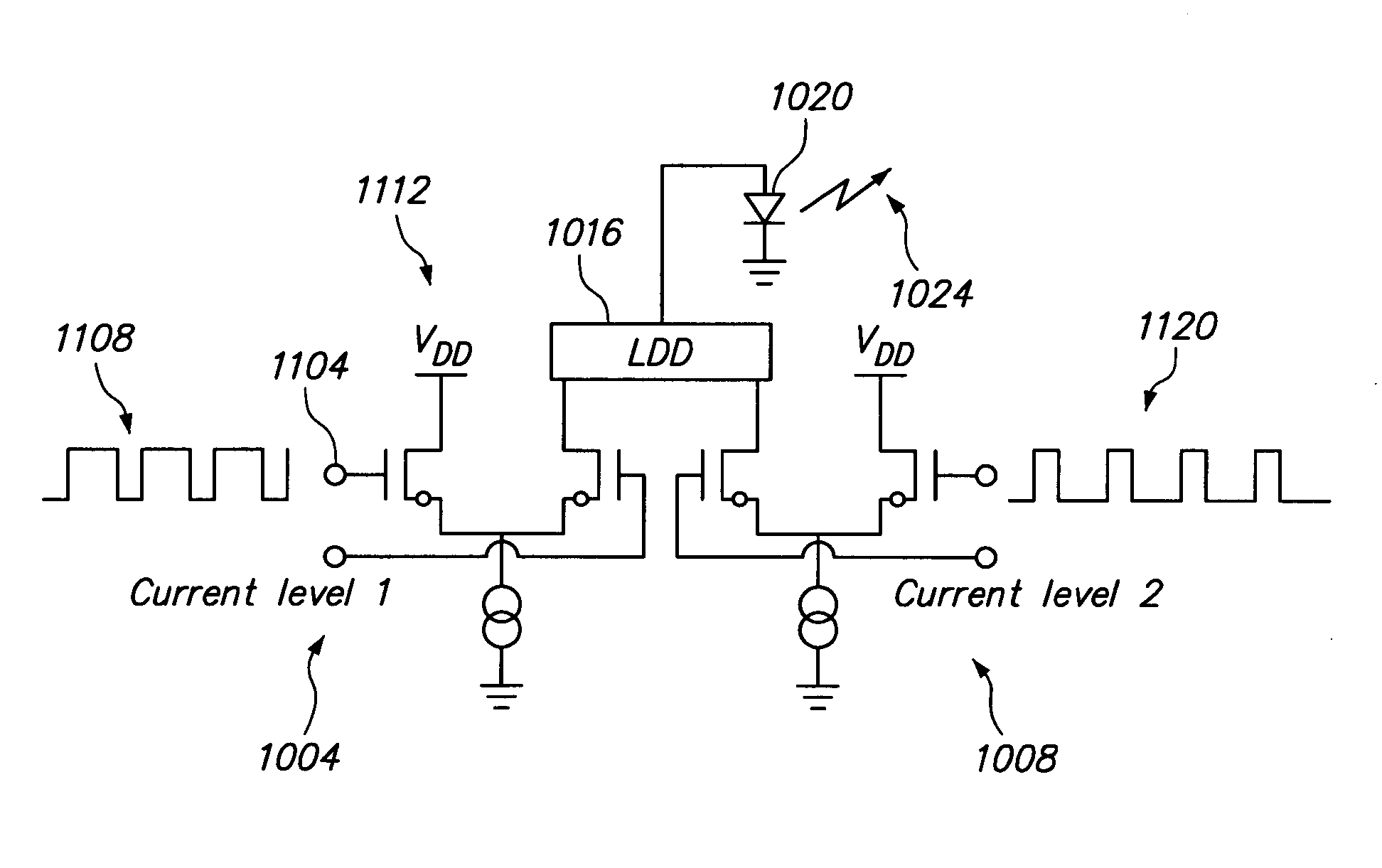Method and apparatus for reducing optical signal speckle
- Summary
- Abstract
- Description
- Claims
- Application Information
AI Technical Summary
Benefits of technology
Problems solved by technology
Method used
Image
Examples
Embodiment Construction
[0041]The term optical signal generator, as used herein is defined to mean any device, element or configuration that emits light. This may include but is not limited to laser, light emitting diode, liquid crystal display, laser diode, gas laser, color center laser, solid state laser, or any other light source that suffers from speckle or other image quality degradation due to light coherence. The term light as used herein may comprise any type or wavelength of light including but not limited to near infrared, far-infrared, visible spectrum, or ultraviolet. The term coherence refers to the broadness of the emission spectrum of the light energy considered. The broadness is typically measured by the wavelength range beyond which—the emitted power drops below half of the peak power. For projector applications an emission width of 1 nm or below is considered “coherent” . Different application might consider different value of spectral broadness as coherent. It is further contemplated tha...
PUM
 Login to View More
Login to View More Abstract
Description
Claims
Application Information
 Login to View More
Login to View More - R&D
- Intellectual Property
- Life Sciences
- Materials
- Tech Scout
- Unparalleled Data Quality
- Higher Quality Content
- 60% Fewer Hallucinations
Browse by: Latest US Patents, China's latest patents, Technical Efficacy Thesaurus, Application Domain, Technology Topic, Popular Technical Reports.
© 2025 PatSnap. All rights reserved.Legal|Privacy policy|Modern Slavery Act Transparency Statement|Sitemap|About US| Contact US: help@patsnap.com



